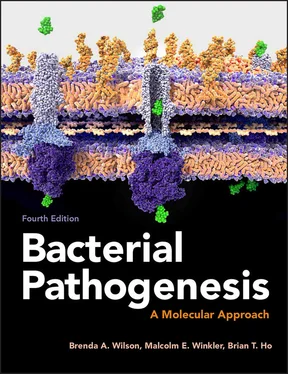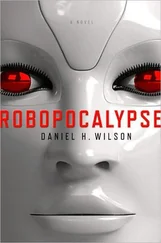Scientists and physicians reluctantly began to realize that a decisive human victory over bacteria had not occurred. Not only were known pathogens changing to be more resistant to antibiotics or better able to cause disease, but also new pathogens with markedly different virulence traits were emerging. The infectious disease picture was changing in a way that made it increasingly difficult to predict new patterns of bacterial disease. The serious threat of antibiotic-resistant bacteria to human health both in the United States and the world was documented in 2013 by reports from the Centers for Disease Control and Prevention (CDC) and the World Health Organization (WHO).
Bacteria, a Formidable Ancient Life Form
The brief foregoing account of how bacterial diseases have come into prominence as a major global health problem explored the recent past. However, to understand fully why no one should have been surprised by this development and why bacteria are such formidable opponents, it is necessary to take a closer look at the long history of bacteria, during which they were constantly forced to evolve and adapt to new conditions.
Today, we realize that Earth is a microbial planet. Bacteria were probably the first form of life to appear on Earth, about 3.5 to 4 billion years ago ( Figure 1-1). Bacteria and another type of prokaryote, the archaea, ruled the world unchallenged for at least a billion years before the first eukaryotes appeared. During this period, they helped create the global geochemical cycles that made Earth habitable for larger life forms. Bacteria and archaea are master recyclers. Bacteria put the first molecular oxygen in Earth’s atmosphere, thereby creating the ozone layer, which protected Earth’s surface from the deadly radiation that had previously bombarded it, making life on Earth’s surface possible. By adding molecular oxygen to the atmosphere, bacteria created conditions that permitted the later evolution of oxygen-utilizing creatures, including humans.

Figure 1-1. Overview of microbial evolution. Microorganisms appeared 3.5 to 4 billion years ago and changed Earth such that eukaryotes could evolve.
In the course of their long history, bacteria developed a variety of metabolic capabilities that allowed them to survive under an impressive variety of conditions. There are bacteria that can obtain energy by oxidizing sulfides, reducing sulfate, oxidizing ammonia, reducing nitrate, and oxidizing methane—to name only a few of the vast number of metabolic types represented in the bacterial world. Bacteria also learned how to maximize the plasticity of their genomes, constantly acquiring new DNA and mutating or rearranging existing genes, thereby creating new capabilities that enabled them to colonize the many niches on Earth. So far, no part of Earth has been found to be free of bacteria and archaea. They are in arctic ice, the deep subsurface of landmasses, the surfaces and depths of the oceans, and boiling hot springs. The genetic plasticity that enabled evolution of such metabolically diverse organisms continues to serve bacteria today as they face new challenges and opportunities.
About a billion years after bacteria first appeared on Earth, the first eukaryotes, the single-celled protozoa, emerged. Disease-causing bacteria are often capable of doing so because they have developed strategies for evading phagocytosis (engulfment) or for surviving inside phagocytic cells. Evolution of such strategies could have begun soon after the appearance of the first protozoa, well in advance of the appearance of animals and humans. Some of the toxic proteins that disease-causing bacteria use to kill human cells might have originally evolved to allow bacteria to evade or survive feeding by their protozoal adversaries. Today, scientists are finding that some bacterial pathogens that are harmful to humans normally live inside amoebas in nature. If this view of bacterial evolution is correct, then there are likely to be more unidentified disease-causing bacteria in nature than we currently know.
As bacteria evolved diverse metabolic specialties, acquisition of bacteria or archaea as coinhabitants (endosymbionts) enabled eukaryotes to expand their metabolic diversity as well. Eukaryotes acquired bacterial endosymbionts (now known as mitochondria) that allowed them to gain energy through respiration and to regulate cellular metabolism, thereby also enabling them to become multicellular. Cells of what would later become plants acquired photosynthetic bacteria as endosymbionts (now known as chloroplasts), again conferring on them the ability to harness energy from the sun through photosynthesis. Some plants went even further and also recruited into their root cells prokaryotic endosymbionts (both bacterial and archaeal), which could fix atmospheric nitrogen into nitrogenous compounds that the plant could then use as fertilizer.
As animals and eventually people emerged, bacteria were quick to take advantage of the warm, moist environment offered by their intestinal tracts. In turn, many of these bacteria helped to provide nutrients for the animal or human host by metabolizing the intestinal contents. There is no point in a human life span, except for the brief time the fetus spends in the uterus, during which the human body is not heavily colonized by large numbers of bacteria, especially on the skin, in the mouth, in the intestinal tract, and in the vaginal tract. These bacteria are highly adapted to their niches in and on the human body. However, their constant presence puts them in a position to take advantage of any breach in the defenses protecting the interior tissues and bloodstream from bacterial invasion.
Although some eukaryotic microbes such as algae have a photosynthetic lifestyle, many others, especially amoebas and other protozoa, live by feeding on bacteria and archaea. An interesting aspect of this protozoal grazing that has attracted particular attention recently is that protozoa have properties that are remarkably similar to human phagocytic cells, cells that form an important part of the defenses of the human body. Some of these human phagocytic cells function mainly to engulf, break down, and clear bacteria in blood and tissues. Of these, some then present components of broken-down bacteria to the cells of the immune system.
When animals and humans finally appeared on the evolutionary scene, bacteria immediately took advantage of them as rich niches in which to grow. To a bacterium accustomed to the vagaries of the external environment, where ambient temperature and availability of water and nutrients can vary widely (and unpredictably), a warm-blooded animal whose body temperature is stably maintained and whose lifestyle involves constantly collecting food and water from the environment must be as close as it gets to bacterial heaven. As such, it should not be surprising that the bodies of humans and animals carry dense bacterial loads, especially in the mouth, intestinal tract, and vaginal tract. Small wonder that the human or animal body is often referred to in the scientific literature as the host and that the interaction between a bacterium and its host is referred to as a host-microbe relationship.
Until recently, scientists studying the evolution of insects, animals, and humans almost completely ignored the selective pressure exerted by the long-term presence of the large and diverse populations of bacteria with their hosts. Now, a rapidly expanding area of research has emerged that is devoted to studying the coevolution of hosts with their resident microbial communities, also known as microbiomes. As will become evident in the next few chapters, the effects of microbial pressure can be seen clearly in the design of human skin, eyes, lungs, intestinal tract, vaginal tract, and in particular the immune system. Overwhelming evidence points to the vital role that microbiomes play in both promoting health and modulating disease susceptibility and severity. For the first time, we are also realizing the importance of considering the ancestry of both the host and the microbe when considering pathogenic potential ( Box 1-1).
Читать дальше













